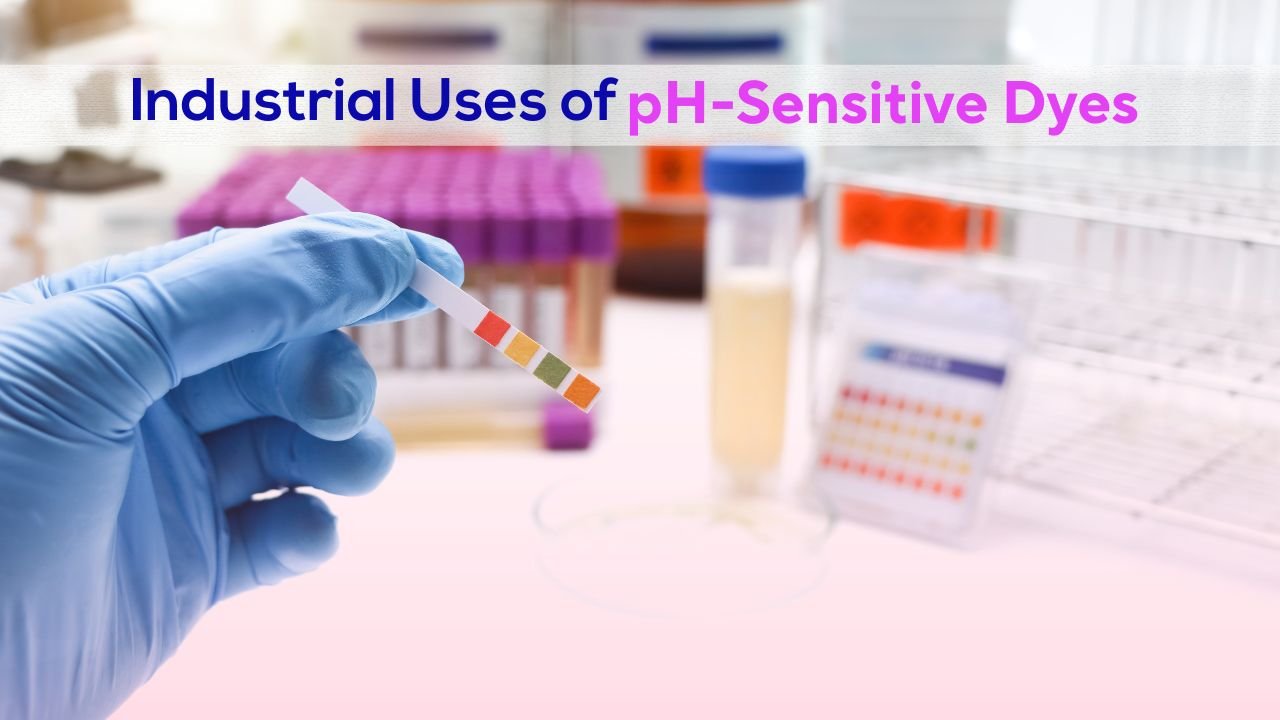pH-sensitive dyes, also known as pH indicators, are compounds that change color in response to the acidity or alkalinity of a solution. These dyes are integral to numerous industrial processes due to their ability to provide a visual representation of pH changes. This article explores the various applications of pH-sensitive dyes across different industries, highlighting their importance and versatility.
1. Food and Beverage Industry
In the food and beverage industry, maintaining the correct pH is crucial for product quality, safety, and taste. pH-sensitive dyes are used in several ways:
- Quality Control- During the production of beverages like beer, wine, and fruit juices, pH-sensitive dyes help monitor fermentation processes and ensure the final product has the desired flavor and stability.
- Safety Testing- pH indicators are employed to test the acidity of products, ensuring they are within safe consumption limits. For instance, in dairy production, the pH of milk is checked to prevent spoilage and ensure freshness.
- Color Stability- Some dyes are added to food products to maintain color consistency, which can be pH-dependent. This is particularly important in candies and soft drinks.
2. Textile Industry
The textile industry relies heavily on pH-sensitive dyes for various stages of fabric treatment and dyeing processes:
- Dyeing Process- The pH of dye baths must be controlled to achieve the desired color intensity and fabric quality. pH indicators help monitor and adjust the pH during dyeing, ensuring uniform color distribution.
- Finishing Treatments- pH-sensitive dyes are used in post-dyeing treatments to ensure the pH levels are optimal for fabric softness and durability. This includes processes like bleaching and washing.
- Quality Assurance- pH indicators are used to test the fabric’s pH, ensuring it is safe for skin contact and meets regulatory standards.
3. Water Treatment
In water treatment facilities, pH-sensitive dyes play a pivotal role in monitoring and controlling the water quality:
- pH Monitoring- pH indicators are used to continuously monitor the pH levels of water, ensuring it remains within the safe range for consumption and industrial use.
- Chemical Dosing- Accurate pH measurements are essential for dosing chemicals like chlorine and alum, which are used to disinfect and clarify water. pH-sensitive dyes help in adjusting these dosages precisely.
- Wastewater Treatment- In wastewater treatment plants, pH indicators are used to manage the pH levels during different treatment stages, ensuring the effluents are treated effectively before being released into the environment.
4. Pharmaceutical Industry
The pharmaceutical industry utilizes pH-sensitive dyes for various critical applications:
- Drug Formulation- pH indicators are used in the development of drug formulations to ensure stability and efficacy. For example, the pH of a solution can affect the solubility and absorption of active pharmaceutical ingredients.
- Quality Control- During the manufacturing process, pH-sensitive dyes help in monitoring the pH of various solutions and reagents to maintain consistent product quality.
- Diagnostic Kits- pH indicators are integral components of diagnostic kits used for testing bodily fluids, such as urine and blood, where pH changes can indicate health conditions.
5. Cosmetic Industry
The cosmetic industry leverages pH-sensitive dyes for the development and quality control of beauty and personal care products:
- Product Formulation- pH indicators are used to ensure that products like shampoos, lotions, and creams have the appropriate pH to avoid skin irritation and enhance product performance.
- Stability Testing- pH-sensitive dyes help in the stability testing of cosmetic products, ensuring that they maintain their efficacy and safety over time.
- Hair Coloring- pH indicators are used in hair dye formulations to achieve the desired color changes while maintaining hair health.
6. Agriculture
In agriculture, pH-sensitive dyes are essential for soil and nutrient management:
- Soil Testing- pH indicators are used to test soil pH, helping farmers adjust the soil conditions to optimize crop growth and yield. This is crucial for determining the appropriate use of fertilizers and lime.
- Hydroponics- In hydroponic systems, pH-sensitive dyes help monitor and maintain the pH of nutrient solutions, ensuring optimal nutrient availability to plants.
7. Chemical Manufacturing
Chemical manufacturing processes often require precise pH control to ensure product quality and safety:
- Synthesis Reactions- pH indicators are used to monitor and control the pH of reaction mixtures, influencing reaction rates and product yields.
- Process Control- Continuous pH monitoring using indicators helps in maintaining the consistency of chemical processes, leading to higher-quality end products.
- Quality Assurance- pH-sensitive dyes are used in the final product testing to ensure they meet the required specifications and standards.
8. Environmental Monitoring
Environmental monitoring applications of pH-sensitive dyes include:
Air Quality- pH indicators are used in sensors to detect acidic or basic pollutants in the air, helping to monitor and manage air quality.
Soil and Water Testing- pH-sensitive dyes are employed in testing the pH of soil and water samples from different environments to assess pollution levels and ecosystem health.
9. Medical Diagnostics
In medical diagnostics, pH-sensitive dyes are used in various testing kits and procedures:
- Blood Gas Analysis- pH indicators are used to measure the pH of blood samples, providing critical information about a patient’s respiratory and metabolic state.
- Urine Analysis- pH-sensitive dyes in urine test strips help detect urinary tract infections and other conditions by indicating pH changes.
- Wound Care- pH indicators are used in wound care products to monitor the pH of wounds, aiding in the assessment of healing progress and infection risk.
10. Research and Development
In R&D laboratories, pH-sensitive dyes are essential tools for various experimental procedures:
- Chemical Research- pH indicators are used to study reaction mechanisms and kinetics by monitoring pH changes during chemical reactions.
- Biological Research- In cellular and molecular biology, pH-sensitive dyes help study processes like enzyme activity and cellular respiration by providing real-time pH measurements.
- Material Science- pH indicators are used to develop and test new materials, including pH-sensitive polymers and coatings, which have applications in smart materials and drug delivery systems.
Conclusion
pH-sensitive dyes are indispensable in numerous industrial processes, providing essential data for monitoring and controlling pH levels. Their applications span across various industries, including food and beverage, textiles, water treatment, pharmaceuticals, cosmetics, agriculture, chemical manufacturing, environmental monitoring, medical diagnostics, and research and development. The ability of pH-sensitive dyes to provide accurate and real-time pH measurements makes them vital for ensuring product quality, safety, and efficiency in these diverse fields. As technology advances, the applications of pH-sensitive dyes are likely to expand further, offering new solutions and innovations in industrial processes.








